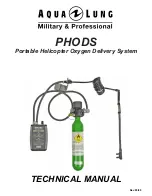
16-52
IM 765601-01E
Clearing the Measurement Event Register
The measurement event register is cleared in the
following three cases.
• When the contents of the source event register is
read by the :STATus:SENSe:EVENt? command.
• When a *CLS command is received.
• When the instrument is power cycled.
16.3.6 Output Queue and Error Queue
Output Queue
The output queue stores response messages for the
queries.
The example below shows that data is stored record
by record in the output queue, and is read out oldest
item first. The output queue is emptied in the following
cases (in addition to when read-out is performed).
• When a new message is received from the
controller.
• When a deadlock occurs (see page 16-3).
• When a device clear command (DCL or SDC) is
received.
• When the instrument is power cycled.
The *CLS command cannot be used to clear the output
queue. To see whether the output queue is empty or
not, check bit 4 (MAV) of the status byte.
D1
D2
D1
D2
D1
Error Queue
The error queue stores the error number and message
when an error occurs. For example, if the controller
sends an incorrect program message, the error number
and message “‒113, “Undefined header”” are stored in
the error queue when the error is displayed.
The SYSTem:ERRor? query can be used to read the
contents of the error queue. As with the output queue,
the messages are read from the oldest ones first.
When the error queue overflows, the last message is
replaced by the following message: “‒350, “Queue
overflow.””
The error queue is also cleared for the following cases.
• When a *CLS command is received.
• When the instrument is power cycled.
Bit 2 (EAV) of the status byte can be used to check
whether the error queue is empty.
16.3 Status Reports
















































